Introducing your child to tennis at a young age can set them on a path to success and lifelong enjoyment of the sport. By engaging in fun and effective drills, kids develop essential skills such as hand-eye coordination, footwork, and agility, which are crucial for their progress in tennis.
In fact, according to the International Tennis Federation, starting tennis lessons early can increase a child's chances of becoming a successful player by up to 80%. As they grow, these young players will not only enjoy the physical and mental benefits of the sport, but they may also have the opportunity to pursue it professionally.
In this article, we'll explore 12 famous tennis drills for kids that are designed to keep them engaged, enhance their skill set, and help them become well-rounded tennis players.
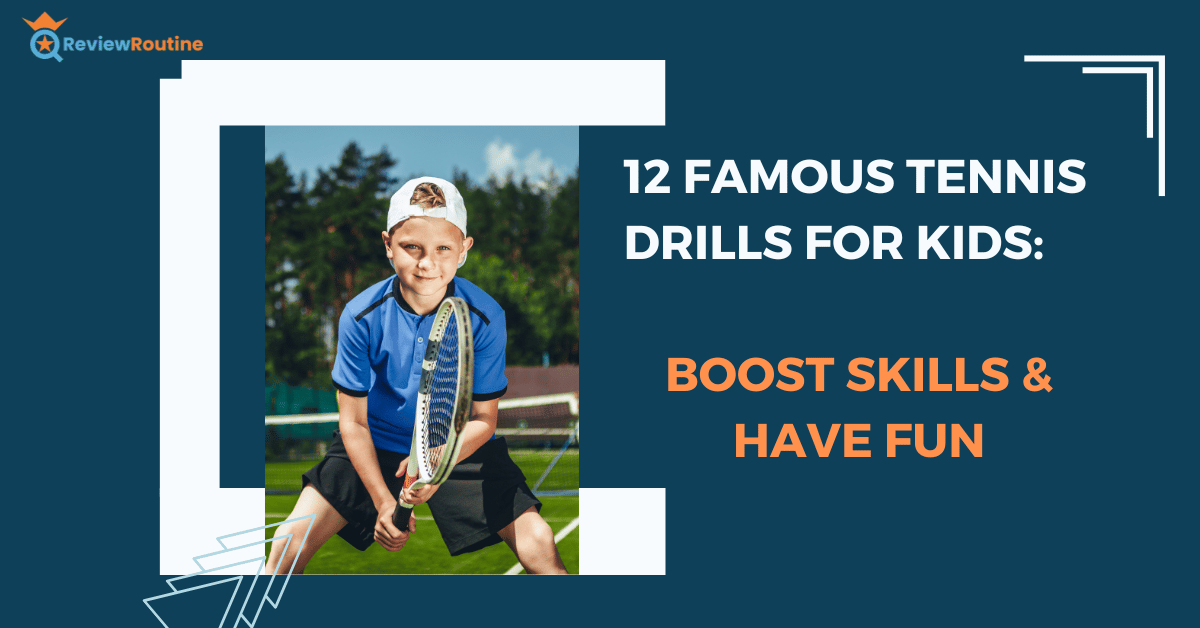
1. Court Exploration Warm-Up
This engaging warm-up routine gets kids moving by having them run the lines of the tennis court. As they traverse the baseline, service line, and doubles sidelines, they not only improve their agility and dynamic balance but also become familiar with the court's layout.
Studies have shown that warm-up exercises can reduce injury risk by up to 50% (source: British Journal of Sports Medicine).
By teaching the names of the lines during this activity, kids gain a better understanding of the game while building a strong foundation for their tennis skills.
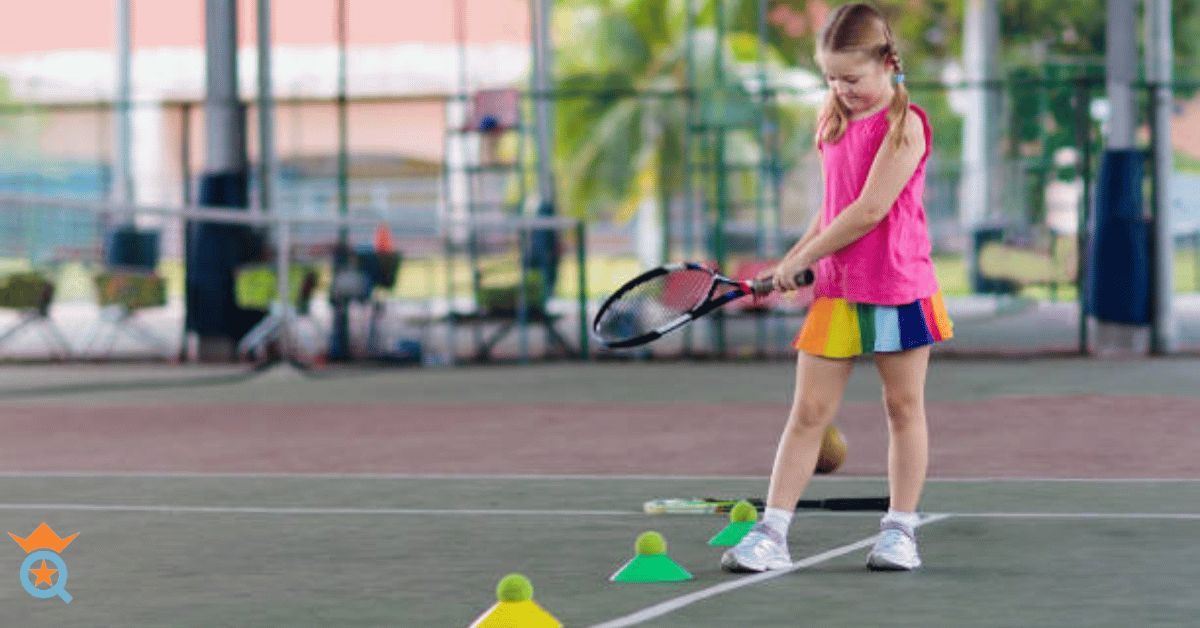
2. Two-Group Rally
In this fun and competitive drill, kids are split into two groups (A and B) behind the baseline on opposite sides of the court. The instructor feeds the ball to the first player in Group A, who then hits it toward Group B.
After each hit, the players rotate to the back of their respective lines, allowing everyone to participate. This tennis drill not only encourages teamwork but also helps young players improve their hand-eye coordination and shot consistency.
As the rally continues, the game becomes more challenging, ultimately identifying the last-standing player as the winner. This engaging activity keeps kids excited about tennis while building their skills and confidence.
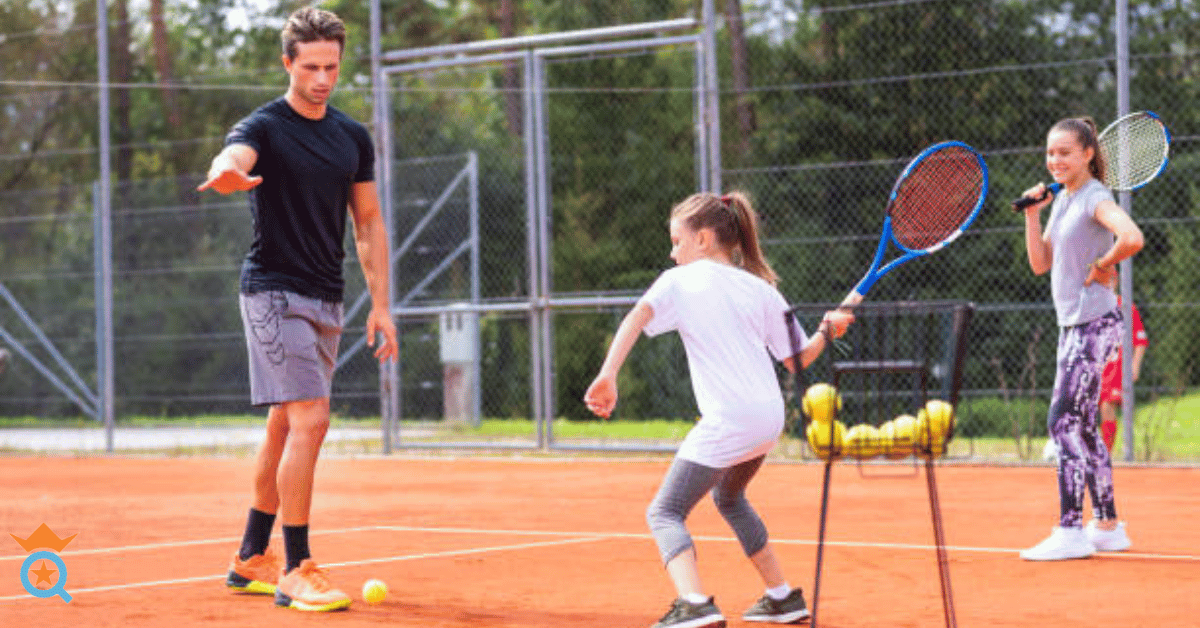
3. Four Square Tennis
This lively adaptation of the classic playground game transforms the service box into four numbered squares. Kids use tennis rackets and balls to keep the ball bouncing within the squares, promoting hand skills and quick reflexes.
Four Square Tennis allows young players to practice their precision and control in a fun, engaging environment.
Additionally, it fosters social interaction, teamwork, and friendly competition, making it an ideal drill for kids to develop essential skills while enjoying the game.
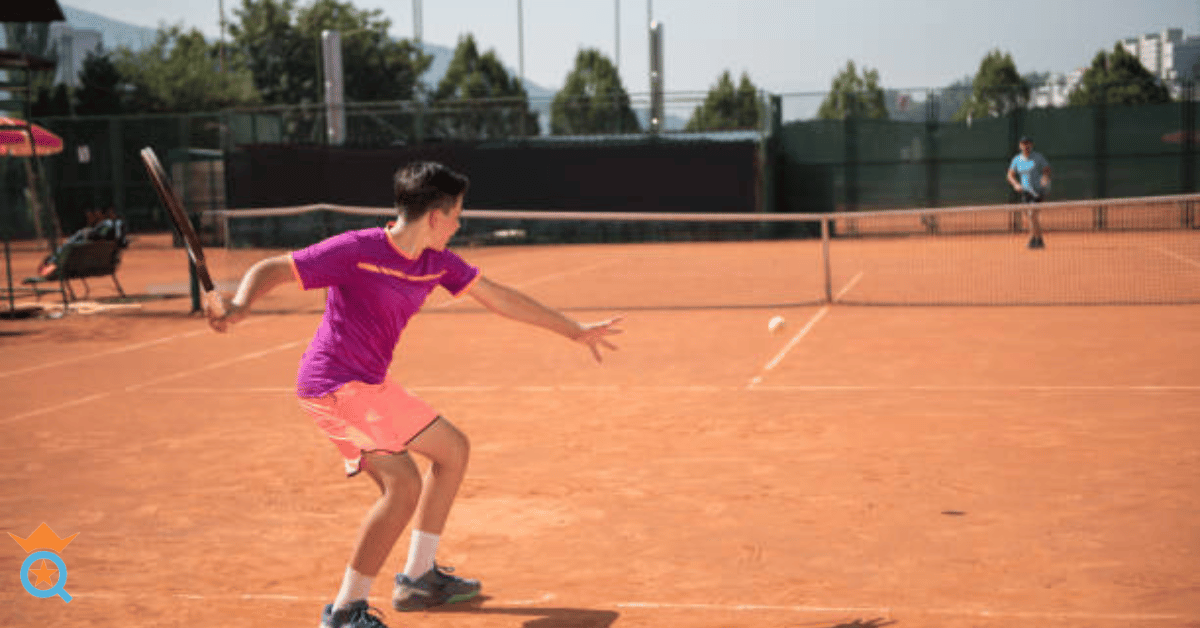
4. Simon Says Tennis Strokes
In this entertaining and educational drill, kids learn various tennis strokes and terminologies by following the instructor's commands, such as "Simon says forehand."
Not only does this exercise help young players improve their stroke execution, but it also adds a fun and competitive element to the training session.
By incorporating a familiar game like Simon Says, children stay engaged and motivated, making it easier for them to grasp and practice essential tennis techniques.
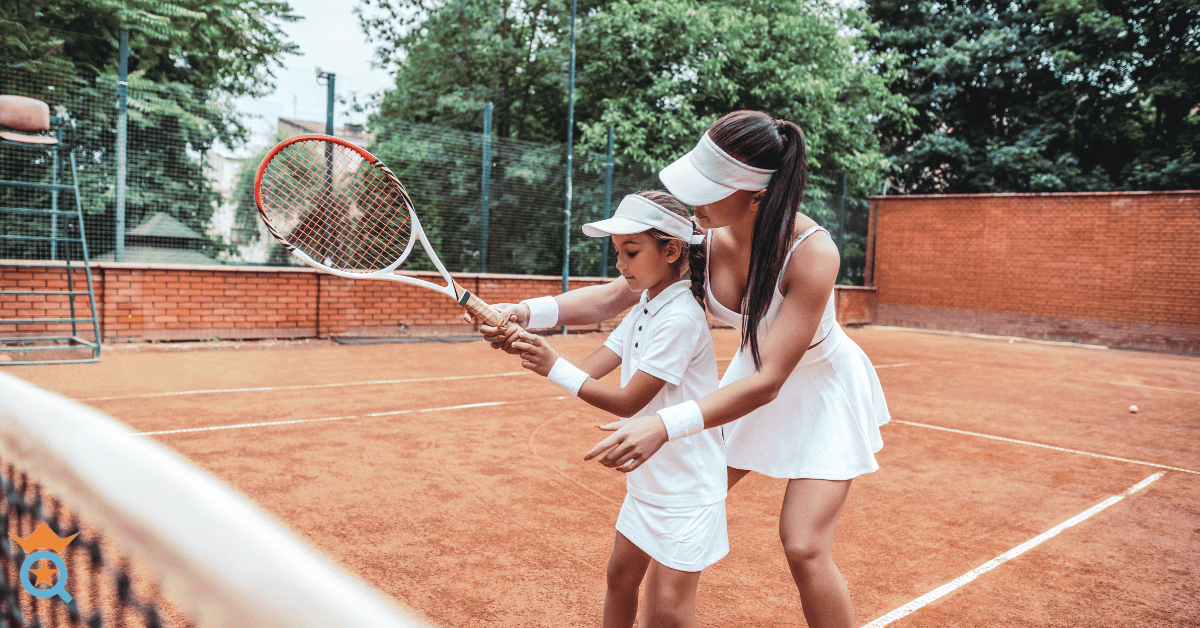
5. Around-the-World Jabba the Hut
This engaging drill involves two groups of three, with one student kneeling at the T part of the court while others stand behind the baseline. Teams rally, and if the kneeling player (Jabba the Hut) hits a good ball, their team earns points.
The first team to reach 21 points wins. This drill helps develop hand-eye coordination, teamwork, and tennis strategy in young players.
Moreover, the competitive and cooperative nature of the game keeps kids motivated and entertained, ensuring they stay focused on improving their skills.
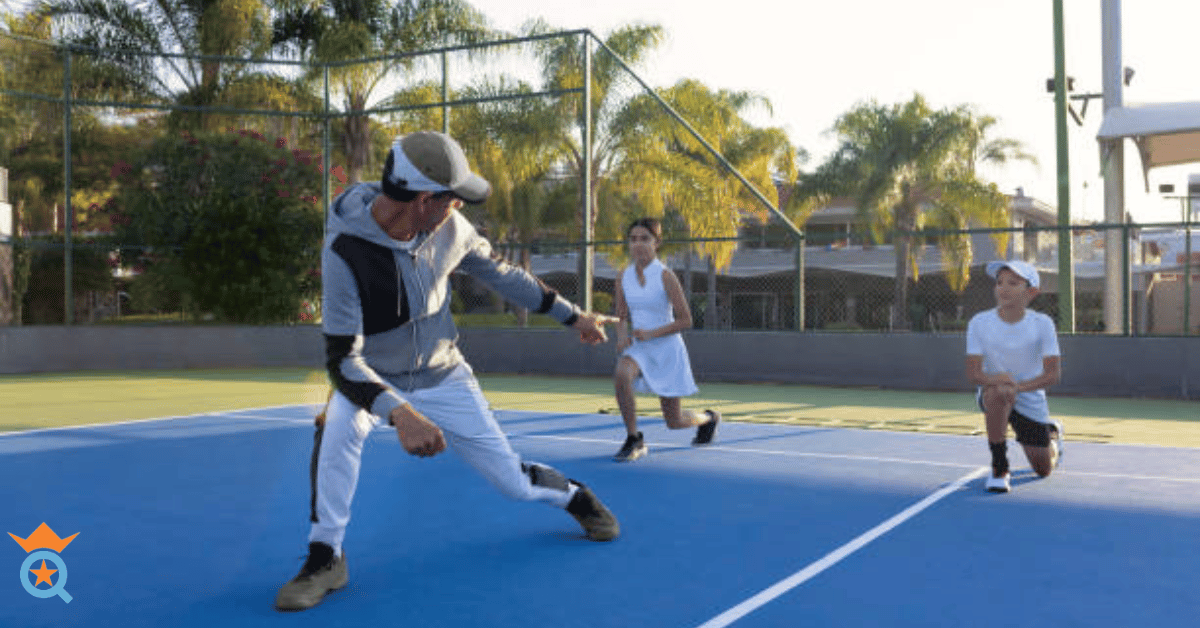
6. Hit and Run Recovery
In this dynamic drill, kids learn to quickly reach the ball, hit it, and recover to the right spot on the court. The instructor feeds tennis balls in various directions while the student returns them and promptly returns to their original position.
This exercise enhances young players' footwork, agility, and anticipation skills, which are essential in tennis.
The continuous movement keeps kids active and engaged, making it an enjoyable and effective way to practice essential on-court movements and maintain their interest in the sport.
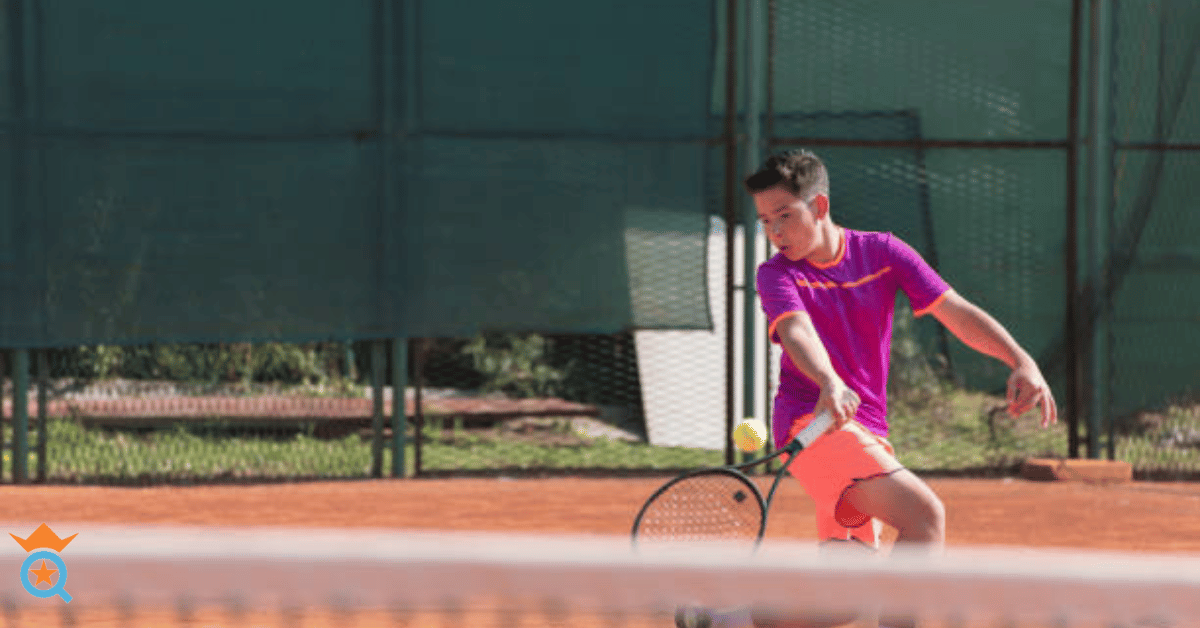
7. Go to Bed Hand-Eye Coordination
Boost hand-eye coordination, accuracy, and agility with this fun and challenging drill. In "Go to Bed," the instructor feeds balls to the students, who must return them accurately. If a student misses four returns, they "fall asleep" and must run to the opposite side of the court.
To rejoin tennis games, they must catch another student's ball after its first bounce. This engaging activity keeps young players on their toes and helps them develop essential hand-eye coordination skills, a crucial aspect of tennis.
Furthermore, the playful and interactive nature of the game helps maintain kids' interest, making it an excellent drill for developing their tennis abilities while having fun on the court.
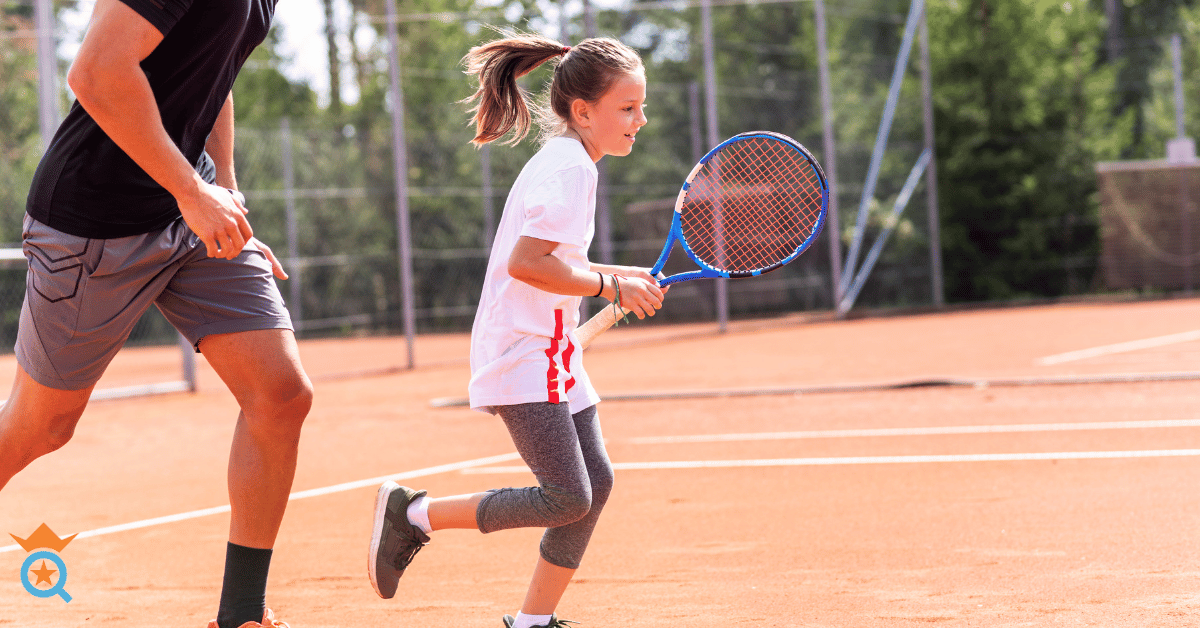
8. Ring Around the Rosie
These engaging and interactive drills teach kids to develop their accuracy and ball control. In "Ring Around the Rosie," players stand in a circle around the instructor, who feeds the ball to one of them. The receiver attempts to hit the tennis ball toward the instructor after it bounces.
If a student misses their shot, they're out of the drill, and the last standing player wins. This game helps young players practice their accuracy and control while keeping their focus on the ball. The fun, inclusive nature of the activity helps maintain kids' interest, making it an excellent choice for developing their tennis skills.
Plus, as children compete against each other in a friendly environment, they learn the importance of sportsmanship and teamwork – essential life skills that extend beyond the tennis court.
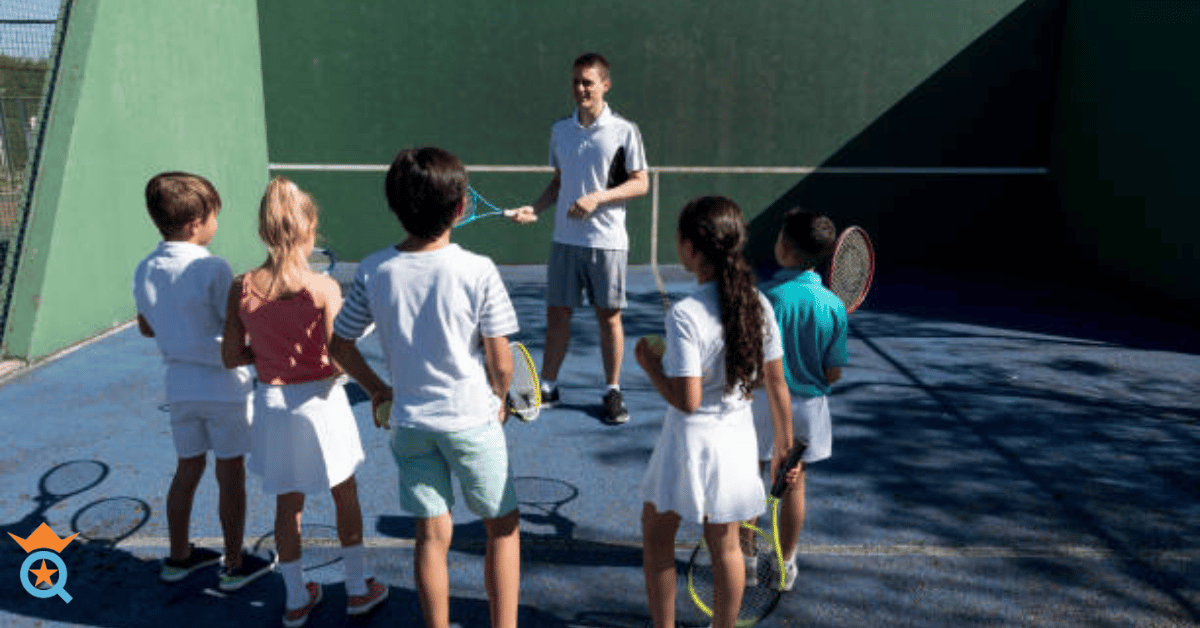
9. Partner Ball Pass
A fantastic way to improve hand-eye coordination and teamwork, the Partner Ball Pass drill involves players tossing the ball from their racket to another player's racket without letting it touch the ground.
This simple yet engaging activity helps young kids get accustomed to hitting the ball back and forth while also promoting communication and collaboration. As children participate in this drill, they develop essential tennis skills like racquet control, accuracy, and timing.
Additionally, the Partner Ball Pass provides an opportunity for kids to build friendships and strengthen bonds with their peers, fostering a positive learning environment.
By practicing this activity regularly, young players will undoubtedly enhance their tennis performance and develop a strong foundation for future success in the sport.
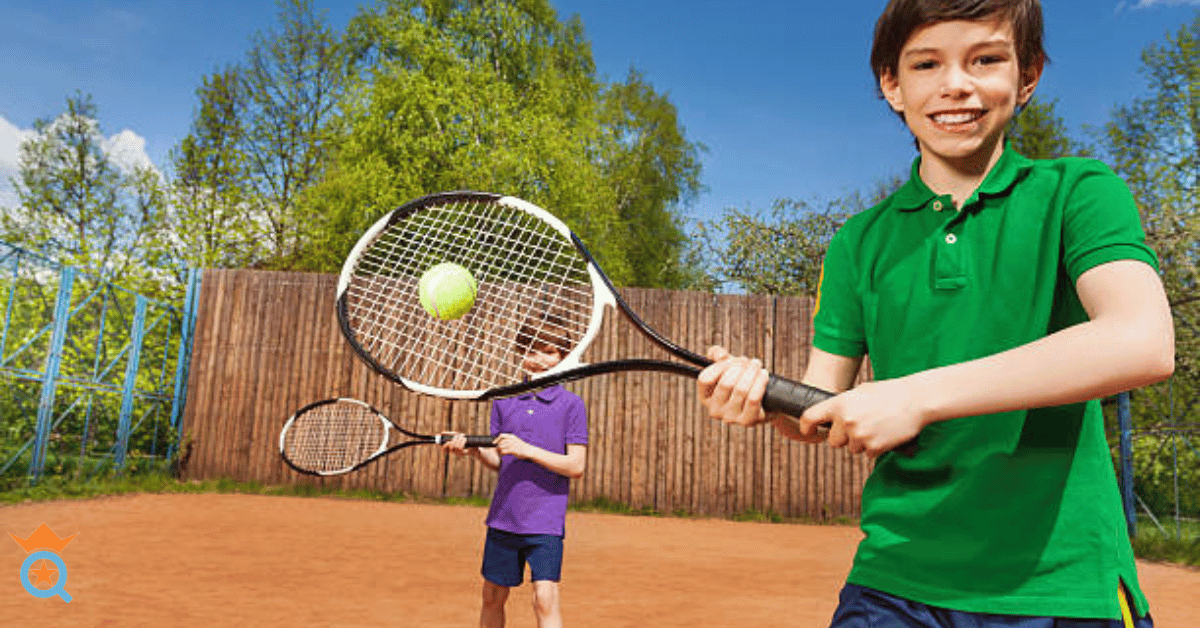
10. Squash Ball Roll and Hit
Perfect for young players aged four to six, the Squash Ball Roll and Hit drill combines the fun of mini-golf with tennis fundamentals. In this activity, kids take turns rolling the ball to their partner, who then hits it with their racket as if they were using a club in mini-golf.
This drill helps children develop essential skills such as hand-eye coordination, racquet control, and timing. Additionally, it introduces them to the concept of striking a ball at a low trajectory, preparing them for more advanced tennis techniques.
As they engage in this playful drill, kids learn to enjoy the sport and build a strong foundation for their tennis journey, ultimately setting them up for long-term success on the court.

11. Invisible Opponent Serving Practice
A great way to help beginning players develop their services and understand the scoring system is through the Invisible Opponent Serving Practice drill. In this activity, kids pretend to serve against an unseen adversary, allowing them to concentrate on consistent serving while experiencing the pressure of a real match.
As they serve, they also practice keeping track of the score, which reinforces their understanding of tennis scoring rules. This drill not only improves their serving technique and accuracy but also boosts their confidence on the court.
As a result, young players become better prepared for actual matches and learn to manage pressure, ensuring they continue to grow and excel in the sport of tennis.

12. Ball Toss Forehands and Backhands
In the Ball Toss Forehands and Backhands drill, the instructor stands close to the net and tosses a ball toward the student, who practices hitting both forehand and backhand shots.
This engaging activity allows young players to gradually develop their hand-eye coordination, tennis racquet control, and footwork, preparing them for actual gameplay. By measuring the speed of the incoming ball and adjusting their feet accordingly, kids improve their overall agility and reaction time.
This essential drill builds a strong foundation for young players, ensuring they develop the skills needed to excel in playing tennis and enjoy the game for years to come.
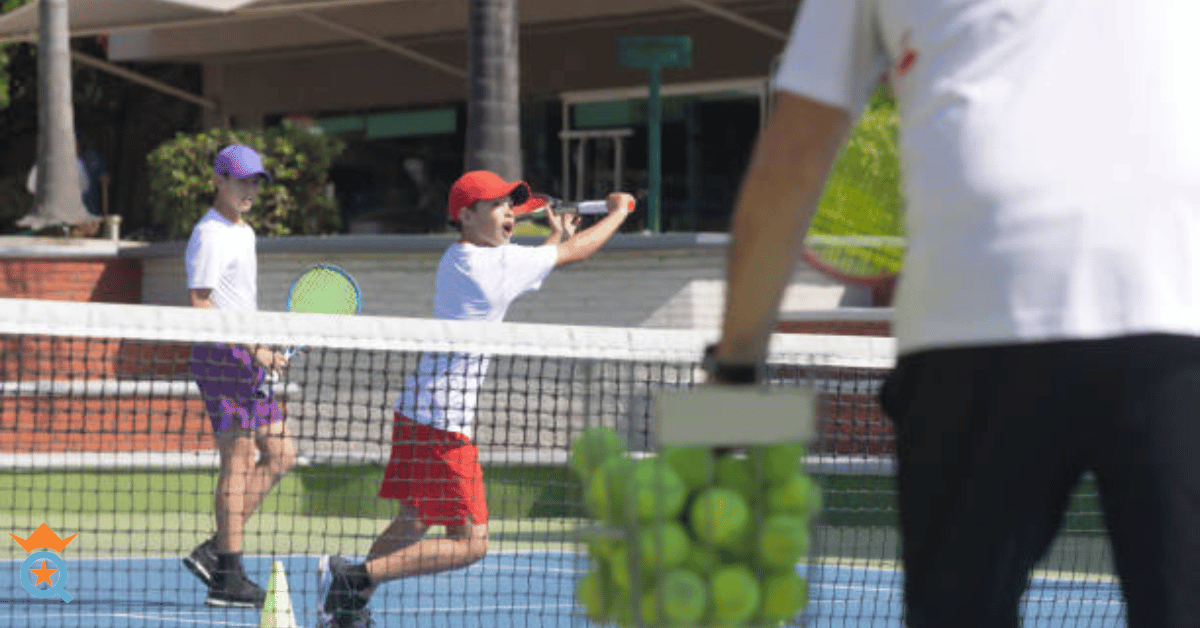
The Bottom Line
Engaging kids in tennis drills that are both fun and educational can significantly enhance their tennis skills and love for the sport. These 12 famous tennis drills for kids are designed to keep them entertained while simultaneously improving their hand-eye coordination, footwork, agility, and overall gameplay.
By incorporating these drills into your child's tennis training, you'll be setting them on a path toward success, helping them develop healthy habits, and fostering their passion for the sport.
As they grow and progress, they'll be well-equipped to tackle more advanced techniques and potentially pursue tennis as a lifelong hobby or even a professional career.
So grab your rackets, and tennis balls, and head out to the court to start exploring these exciting drills with your kids today!








